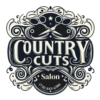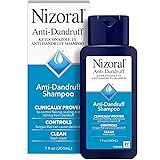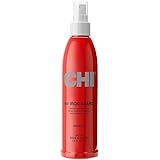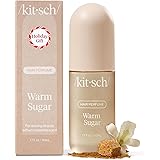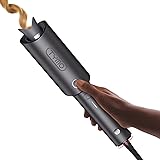Introduction to Hair Coloring Evolution
Hair coloring has undergone a remarkable transformation over the years, evolving from simple, often rudimentary methods to sophisticated techniques that cater to a diverse array of preferences and styles. Historically, ancient civilizations utilized natural substances like henna and plant extracts to alter hair color, with these processes grounded in cultural practices and symbolic meanings. For example, in ancient Egypt, hair color was a reflection of social status, while in other cultures, it was an embodiment of beauty and individuality.
The 20th century marked a significant turning point with the introduction of commercial hair dyes, which made hair coloring more accessible to the general public. Innovations allowed for a wider range of colors and more permanent solutions, leading to pivotal shifts in salon practices. During the 1960s and 1970s, vibrant shades such as bright reds and blues became expressions of youth culture and rebellion, fundamentally changing how society perceived hair color. This period saw the rise of the salon as a communal space for self-expression and innovation, a trend that continues today.
As technology progressed, so too did the methods and products available for hair coloring. The introduction of balayage and ombre techniques in the early 2000s showcased a shift towards more natural-looking results, emphasizing subtlety and dimension rather than flat, uniform colors. Contemporary consumers now seek out personalized experiences that reflect their individuality, driving salons to adopt a broader spectrum of coloring options. Additionally, as awareness of chemical ingredients grew, there has been an increasing demand for organic and less harmful alternatives, ushering in a new era for hair coloring practices.
Balayage: The Art of Hand-Painted Highlights
Balayage, a French term meaning “to sweep,” is a hair coloring technique that involves hand-painting highlights onto the hair, allowing for a more natural, multi-dimensional appearance. This method is distinguished by its soft, sun-kissed lightening, which results in seamless transitions that create depth and dimension. Unlike traditional foiling techniques, balayage focuses on strategic placement of color, which can be tailored to each individual’s hair type and desired effects.
The application process begins with the stylist selecting sections of hair and using a freehand painting method to apply the dye. This allows for a remarkable level of control compared to conventional highlighting methods. As a result, the end result can vary significantly—from subtle highlights to bold, standout colors. This versatility makes balayage an appealing option for different hair textures and lengths, making it suitable for a wide array of individuals. Whether the hair is straight, wavy, or curly, balayage enhances the natural movement and shape of the hair, providing a customized touch.
One of the most celebrated aspects of balayage is its low maintenance compared to traditional color techniques. Since the highlights are painted in a way that mimics the natural lightening of hair, regrowth is less noticeable. However, to maintain the vibrancy and health of the hair post-application, it is essential to establish a proper hair care routine. Using sulfate-free shampoos and conditioning treatments specifically designed for color-treated hair can help preserve the integrity of the balayage. Additionally, occasional touch-ups every few months will ensure the color remains fresh and radiant.
Ombre and Sombre: The Gradient Revolution
The world of hair coloring has evolved significantly in recent years, with ombre and sombre techniques leading the way in offering clients versatile and visually stunning options. Both styles are characterized by a gradient effect, where color transitions seamlessly from darker to lighter shades; however, they differ in intensity and finish. Ombre features a more pronounced contrast, typically transitioning from a deeper base color to a significantly lighter hue towards the ends, creating a bold and dramatic look. In contrast, sombre is subtler, showcasing a softer gradient that maintains a more natural appearance, ideal for those who desire less maintenance while still embracing lively color.
Customization is key when considering ombre or sombre techniques. The versatility of these approaches allows them to suit a wide range of hair types, lengths, and colors. Clients can opt for classic brown-to-blonde transitions or explore a variety of shades, including pastels and vibrant colors. This adaptability is crucial in catering to individual preferences. To achieve the desired effect, professional stylists typically perform a thorough consultation, assessing the client’s skin tone, current hair color, and overall style aspirations. This personalized assessment not only ensures a satisfactory outcome but also helps in advising on how to achieve the best results with either color technique.
When selecting between ombre and sombre, it is essential to consider the level of upkeep you are willing to commit to. Ombre often requires more frequent touch-ups due to its stark color difference, while sombre maintains a more blended look that can extend the time between salon visits. In conclusion, whether one opts for the boldness of ombre or the subtle elegance of sombre, both techniques represent a significant trend in hair coloring, highlighting the client’s individuality while pushing the boundaries of traditional hair design.
Color Melting: Seamless Blending Techniques
Color melting is a modern hair coloring technique that emphasizes the seamless blending of multiple shades to produce a multi-dimensional effect. This innovative method differs from traditional coloring, where distinct hair colors can create harsh lines or noticeable contrasts. Instead, color melting aims to merge tones beautifully, resulting in a soft gradient that enhances the overall appearance of the hair.
The process behind color melting typically involves a skilled colorist applying lighter shades to the mid-lengths and ends of the hair, while darker hues are added to the roots. By using various application techniques such as balayage or foiling, the colorist can achieve a natural look that mimics the way hair would lighten or darken in the sun. This technique is particularly effective for those seeking a low-maintenance option, as the blended colors grow out organically without the need for frequent touch-ups.
Color melting works wonderfully on various hair lengths and textures. On long hair, the technique can create depth and movement, while on shorter styles, it can provide dimension and vibrancy. Curly hair can especially benefit from color melting because the curls can reflect light differently, showcasing the luscious blend of colors. Additionally, this method is versatile enough to accommodate different hair types, making it accessible to a broader audience.
To achieve a flawless color melt, consider these tips: first, ensure your hair is properly prepped and in good condition, as damaged hair can result in uneven color absorption. Second, work with a professional who understands the nuances of color theory; they will be able to choose complementary shades that harmonize. Lastly, regular maintenance in the form of color-safe products will help preserve the vibrancy of your melted tones, allowing you to enjoy stunning results for much longer.
Pastel and Neon Hair Colors: Bold Statements
The trend of pastel and neon hair colors has surged in popularity, particularly among younger demographics eager to express their individuality and creativity. These vibrant shades, which include soft lavender, bright pink, and electric blue, have transcended traditional hair color norms and have become a canvas for artistic expression. Such choices not only make a bold statement but also reflect the wearer’s personality and mood.
To achieve these striking colors, it is essential to start with well-prepared hair. A light bleaching process is often required to eliminate the natural pigment, creating a blank slate that allows for vivid color payoff. Pastel shades generally require a lighter base (preferably platinum blonde) to show their true vibrancy, while neon hues can sometimes be applied over slightly darker bases for a more toned effect. It is crucial to utilize high-quality hair dye products designed specifically for these bold colors. Brands like Pravana and Manic Panic offer professional-grade options that provide long-lasting results and vibrant finishes.
Maintenance of pastel and neon hair colors is paramount for longevity. Utilizing a sulfate-free shampoo can help preserve the vibrancy of the hues, while regular conditioning treatments will keep hair healthy and hydrated. It is advisable to limit washing frequency to retain color intensity. Some individuals may also benefit from incorporating color-depositing conditioners into their routine to refresh their bold colors between coloring sessions.
Moreover, the psychological implications of sporting such vivid hair colors cannot be ignored. Many individuals report feelings of empowerment and enhanced self-esteem when wearing bold colors. The decision to embrace pastel or neon shades often coincides with the desire to challenge societal norms and assert personal identity. In this way, these hair colors become not just a fashion statement but a profound symbol of self-expression.
Temporary Hair Color Innovations: Fun and Experimentation
The landscape of hair coloring has evolved substantially, with a notable shift towards temporary hair color innovations. These products allow individuals to explore bold and vibrant shades without the permanence of traditional dye, catering to those who enjoy experimentation and playfulness in their appearance. Among the most popular temporary hair colors are sprays, chalks, and conditioners, each offering its own unique advantages.
Temporary hair color sprays are especially favored for their ease of application and instant results. They enable users to achieve a pop of color in mere minutes, providing a hassle-free option for festivals, parties, or spontaneous outings. With a wide spectrum of colors available, from pastel pinks to vibrant blues, these sprays can accommodate various styles and preferences, allowing for creative expression in a short time frame. Furthermore, they are easily removable, typically washing out with one shampoo session, making them an excellent choice for those hesitant to commit to long-term color changes.
Hair chalks also offer another innovative approach to temporary coloring. Designed for easy application, hair chalk allows users to apply color to specific sections of hair, thus enhancing highlights or creating unique designs. The chalks blend well with the natural hair color, providing a vivid yet non-permanent option. Additionally, these products come in an array of colors, making it simple to mix and match shades as desired.
Furthermore, conditioners infused with temporary color offer a more nourishing approach. These products allow users to enhance their hair while simultaneously caring for it. Perfect for those looking to refresh their look during a special occasion or simply during a change of mood, temporary hair color conditioners provide a subtle tint that can be easily adjusted depending on one’s day-to-day preference.
Overall, temporary hair color innovations foster creativity and self-expression, enabling individuals to switch up their look with minimal commitment while exploring the vast array of colors available in the market.
Technology in Hair Coloring: Smart Devices and Products
The realm of hair coloring has experienced significant transformation with the advent of advanced technology. Innovations such as color-matching devices and smartphone applications have emerged, facilitating a new level of personalization and precision in hair coloring. These tools enable both consumers and professionals to achieve optimal results tailored to individual preferences and complexions.
Color-matching devices utilize sophisticated algorithms to analyze an individual’s hair and skin tone, offering personalized color recommendations. These devices often feature integrated cameras and advanced sensors that assess lighting conditions and environmental factors, ensuring that the color appears as intended in various settings. As a result, clients can approach hair coloring with increased confidence, knowing that the shades proposed will likely match their expectations.
Moreover, mobile applications have further enhanced the hair coloring experience. Many of these apps allow users to visualize potential hair colors through augmented reality. This not only helps in making informed decisions but also reduces the anxiety associated with drastic changes in appearance. The ability to preview changes before committing to them adds a significant advantage to the hair coloring process, resulting in higher satisfaction rates.
In addition to color visualization, technology has led to the development of hair coloring products designed to minimize damage. Advances in formulations now enable dyes to penetrate hair strands with reduced risk of dryness or breakage. Ingredients such as bonding agents and nourishing oils have become common in modern coloring products, providing enhanced sustainability while maintaining vibrant hues. These innovations contribute to a healthier salon experience, benefiting both clients and stylists through improved results and satisfaction.
Overall, the integration of technology in hair coloring not only streamlines personal choices but also ensures that health and safety are prioritized throughout the process. Clients can enjoy beautiful colors without compromising the integrity of their hair, making technology an indispensable part of contemporary hair coloring practices.
DIY Hair Coloring: Home Techniques and Safety Precautions
In recent years, DIY hair coloring has gained significant popularity, allowing individuals to experiment with new shades from the comfort of their own homes. This practice not only saves money but also provides a sense of empowerment in personal grooming. Among the most favored techniques are at-home coloring kits, semi-permanent dyes, and balayage methods, each offering unique results based on the user’s preferences.
When selecting products for home hair coloring, it is essential to consider the type of dye that aligns with the desired outcome. Permanent dyes deliver long-lasting results, while semi-permanent options allow for more flexibility and easier washes. Additionally, opting for ammonia-free formulas can minimize hair damage. It is advisable to conduct a patch test 48 hours prior to application to identify any potential allergic reactions, ensuring a safer coloring experience.
To achieve the best results, individuals should also follow best practices during the application process. This includes sectioning the hair to ensure even color distribution and applying the dye from the roots to the ends. Using a color brush can facilitate precision and improve the overall look. Adequate preparation is crucial, including wearing an old shirt to avert stains and protecting the skin with a barrier cream to prevent dye from marking the face or neck.
Moreover, it is important to maintain a safe environment. Always work in a well-ventilated space to avoid inhaling potentially harmful fumes. Following the instructions on the dye packaging is vital for achieving the desired results while minimizing the risk of mishaps. After coloring, deep conditioning treatments can help restore moisture and repair any potential damage to the hair. With careful selection of products and adherence to safety precautions, DIY hair coloring can be a rewarding and enjoyable experience.
Conclusion: Embracing Change in Hair Color Trends
In the realm of hair coloring, change is not only consistent but also necessary for those seeking to express their individuality and style. The latest innovations in hair coloring techniques provide a diverse array of options that accommodate various preferences, lifestyles, and hair types. From balayage and ombre to the emerging trends of color melting and shadow roots, individuals can now personalize their hairstyles like never before. These techniques allow for seamless transitions between colors, enhancing the overall aesthetic and providing depth to the hair.
Moreover, the introduction of non-traditional color palettes, including pastel hues and vibrant jewel tones, encourages a fearless approach to hair color. As consumers become increasingly aware of their options, the influence of social media and celebrity endorsements further propels these trends into the mainstream. The accessibility of advanced coloring products and tools also aids amateur hair enthusiasts in experimenting with techniques that were once reserved for professional salons.
Embracing these advancements not only revitalizes personal style but also allows individuals to showcase their unique personalities. As the industry evolves, staying informed about the latest trends and techniques becomes essential. Technological advancements, coupled with innovative artistry, promise to reshape the landscape of hair color continually. In this dynamic environment, adaptability is key, and being open to new ideas can lead to exciting transformations.
Ultimately, embracing change in hair color trends can empower individuals to redefine their look and boost their confidence. Keep an eye on future innovations and societal shifts, as they will undoubtedly inspire new methods and colors in the world of hair coloring. Embrace these trends, express yourself, and enjoy the vibrant possibilities that await your hair journey.
